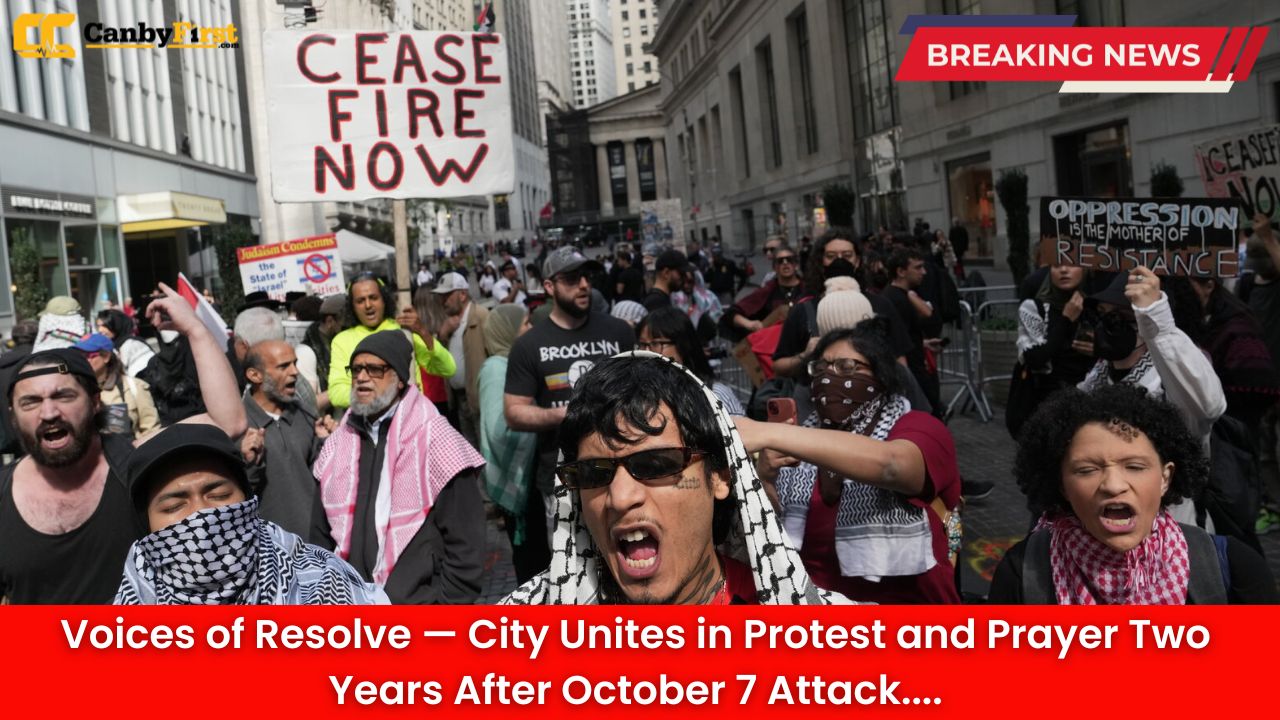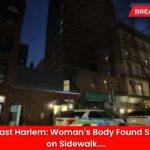New York, US:
Two years after the devastating October 7 attack that claimed thousands of lives and reshaped international conversations about war, peace, and humanity, New York City stood in collective remembrance. From candlelit vigils in Union Square to impassioned protests outside the United Nations, the city became a tapestry of grief, anger, and hope — a reflection of a world still grappling with the conflict’s aftermath.
Throughout the day, New Yorkers gathered at prominent landmarks — Times Square, Brooklyn’s Grand Army Plaza, and Lower Manhattan’s Federal Hall — to mark the solemn anniversary. Many came wearing symbols of peace, holding photos of victims, or carrying banners demanding justice and an end to hostilities.
Also Read
Memorials Across Boroughs
At noon, interfaith leaders hosted a public memorial at Central Park’s Bethesda Terrace, where hundreds stood shoulder to shoulder in silence. Candles were arranged in the shape of a peace symbol as musicians played soft instrumentals honoring the memory of those lost. Clergy members from Jewish, Muslim, and Christian communities read prayers in Hebrew, Arabic, and English, highlighting unity in mourning and a shared call for peace.
In Brooklyn, a youth-led group organized an art-based vigil, featuring murals painted by high school students depicting scenes of solidarity and resilience. “This is not just about remembering tragedy,” said 17-year-old artist Leila Cohen. “It’s about rebuilding through compassion and dialogue.”
Protests Call for Change
Simultaneously, groups of demonstrators filled the streets near the United Nations headquarters, calling attention to ongoing humanitarian crises linked to the conflict. Protesters waved flags, chanted for ceasefires, and demanded increased global accountability. Police presence was significant but largely non-confrontational, ensuring that marches remained peaceful.
A coalition of advocacy organizations, including youth, human rights groups, and diaspora communities, coordinated the rallies. Their message was unified: to turn remembrance into action. “Two years have passed, but justice remains unfinished,” said rally organizer Omar Farouk. “We’re here to remind leaders that every day without resolution prolongs suffering.”
A Divided but Determined Public
The commemorations also revealed a city divided by differing political and humanitarian perspectives. While some focused on mourning the victims of the October 7 attack, others emphasized the ongoing toll of retaliatory military operations. Heated but peaceful debates unfolded at Columbia University and in Washington Square Park, where student groups hosted open-mic events on ethics, memory, and reconciliation.
Despite differing views, most participants agreed on one point — that the world cannot afford to let the lessons of October 7 fade into the chaos of current conflicts.
Political Leaders React
City and state leaders marked the anniversary with somber messages and appeals for peace. New York Governor Kathy Hochul ordered flags at state buildings to be flown at half-mast, calling October 7 “a day of enduring sorrow and reflection for all communities impacted by violence.”
Mayor Eric Adams attended a closed-door interfaith breakfast, later telling reporters that New York’s diverse communities exemplify “how the world can grieve together, speak honestly, and still find paths toward healing.”
Stories of Loss and Strength
Among those attending the memorials were survivors and relatives of the victims. Many shared private stories of loss but also resilience. Sarah Levinson, whose brother was among the Americans caught in the attack, lit a candle near Lincoln Center. “The memories never fade,” she said quietly. “But remembering keeps us grounded — it reminds us why peace matters.”
On the other side of the city, Palestinian-American nurse Lina Al-Khatib spoke at a public forum calling for humanitarian relief and empathy for civilians still caught in the crossfire. “Every family, every child affected by this conflict deserves the dignity of remembrance,” she said. “No one’s grief should be overlooked.”
Art, Music, and Silent Tribute
Cultural institutions also participated in the day’s observances. The Metropolitan Museum of Art hosted a small exhibit titled Echoes of Resilience, showcasing works from artists affected by conflict. Carnegie Hall held a memorial concert featuring orchestral compositions written in tribute to the lives lost, while subway performers throughout the day played songs of peace and mourning.
At 7:00 p.m., the city fell briefly silent as bells from churches and synagogues across the boroughs tolled in unison. For a few moments, the ever-bustling city paused — a rare stillness that honored shared humanity above political divide.
Global Echoes Felt in Local Hearts
Though the October 7 attack occurred far from New York, its impact continues to ripple across the city’s multicultural communities. Home to one of the largest Jewish and Muslim populations outside the Middle East, New York’s response to the anniversary reflected not only grief but also determination to foster coexistence in an increasingly polarized world.
Analysts note that these gatherings, while emotional, signify a new phase of civic dialogue. “This year’s events show a shift from reaction to reflection,” said cultural sociologist Dr. Elaine Mercado. “People are asking deeper questions — not just ‘who is to blame,’ but ‘how do we heal?’”
Looking Ahead
As night fell over the city, the memorial candles flickered against the skyline, their reflections shimmering in puddles from an early autumn drizzle. The air carried the sound of both chants and prayers — sometimes in harmony, sometimes at odds — embodying the complexity of remembrance in a divided world.
For New Yorkers, October 7 now stands not only as a marker of tragedy but as a reminder of their enduring diversity and resilience. From protest lines to prayer circles, the city once again showed that even in disagreement, unity can still find a voice.












